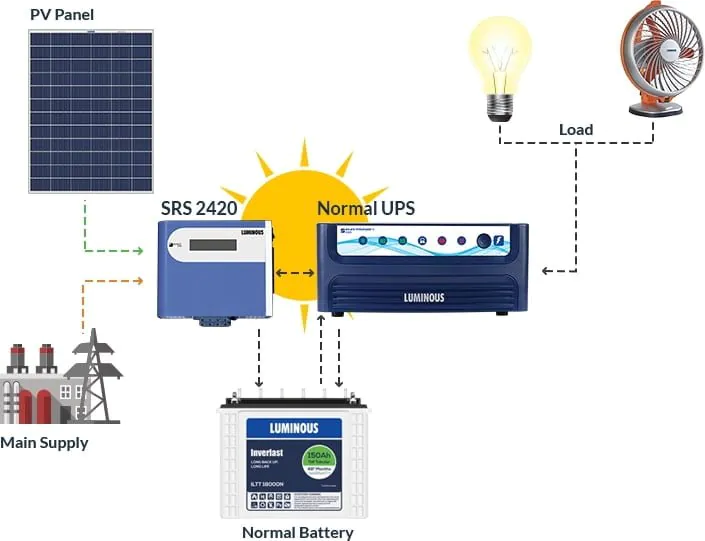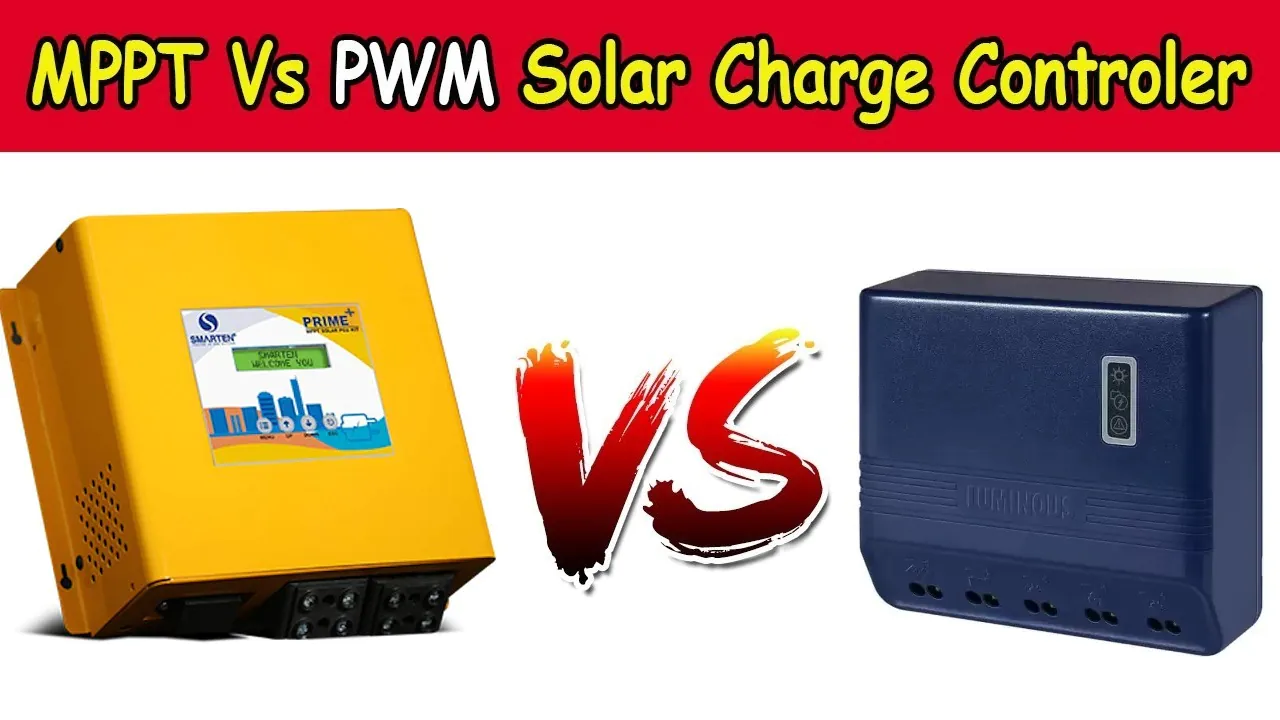MPPT Solar Charge Controller: Optimize Solar Charging Efficiency
Introduction
Welcome to this comprehensive guide on solar charge controllers! In this article, we will explore the critical role of solar charge controllers in optimizing the performance and efficiency of solar power systems. Solar energy is a clean and renewable source of electricity, and understanding the function and importance of solar charge controllers is crucial for harnessing its full potential.
Solar charge controllers act as the gatekeepers of solar energy, regulating the flow of electricity between solar panels, batteries, and loads. In this guide, we will provide you with an in-depth insight into solar charge controllers, including their types, working principles, benefits, and installation. So, let's dive into the world of solar charge controllers and optimize your solar power!

What is a Solar Charge Controller?
A solar charge controller is a device that regulates the flow of electrical charge between solar panels, batteries, and electrical loads in a solar power system. Its primary function is to ensure that the batteries receive the correct charging current and voltage, preventing overcharging and over-discharging. Solar charge controllers play a crucial role in maintaining the health and longevity of batteries while maximizing the efficiency of solar energy utilization.
Types of Solar Charge Controllers
There are different types of solar charge controllers available, each with its own characteristics and advantages. Let's explore the most common types:
Solar Charge Controller Price
| Charge Controller Model | Selling Price |
| 12V/24V 30A Solar Charge Controller | Rs.5,100 |
| 12V/24V 50A Solar Charge Controller | Rs.5,600 |
| 24V/48V 50A Solar Charge Controller | Rs.10,299 |
1. PWM (Pulse Width Modulation) Charge Controllers
PWM charge controllers are the traditional type of solar charge controllers. They regulate the charging of batteries by intermittently connecting the solar panel's output to the battery in pulses. PWM charge controllers are cost-effective and suitable for smaller solar power systems. However, they are less efficient than MPPT charge controllers in converting solar energy.
2. MPPT (Maximum Power Point Tracking) Charge Controllers
MPPT charge controllers are more advanced and efficient than PWM charge controllers. They use sophisticated algorithms to track the maximum power point of the solar panels and optimize the power conversion process. MPPT charge controllers can extract more power from the solar panels, especially in challenging conditions such as low light or high temperature. They are ideal for larger solar power systems and situations where maximizing energy production is crucial.

3. Load Control Charge Controllers
Load control charge controllers not only regulate the charging of batteries but also control the power supply to electrical loads. They have built-in timers or voltage sensors that allow you to set specific times or voltage thresholds for turning on or off connected loads. Load control charge controllers are beneficial in applications where you want to prioritize certain loads or avoid over-discharging the batteries.
4. Hybrid Charge Controllers
Hybrid charge controllers combine the features of both MPPT and load control charge controllers. They optimize the power output of the solar panels and provide load control functionality, making them versatile and efficient. Hybrid charge controllers are commonly used in off-grid solar power systems where battery charging and load management are essential.
How Solar Charge Controllers Work
Solar charge controllers work by continuously monitoring the state of the battery and solar panels and adjusting the charging process accordingly. Here's a simplified overview of how solar charge controllers function:
-
Battery State of Charge (SOC) Monitoring: The charge controller continuously monitors the voltage and current of the battery to determine its state of charge. It measures the battery's voltage level and compares it to predefined thresholds to assess whether charging or discharging is required.
-
Solar Panel Voltage and Current Monitoring: The charge controller measures the voltage and current output of the solar panels to determine the available solar energy. It tracks the maximum power point (MPP) of the solar panels to ensure optimal energy conversion.
-
Regulating Charging Current and Voltage: Based on the battery's state of charge and the solar panel's output, the charge controller regulates the charging current and voltage. It adjusts the amount of current flowing into the battery to prevent overcharging or undercharging, ensuring the battery's optimal performance and longevity.
-
Load Control (if applicable): If the solar charge controller has load control functionality, it monitors the voltage or time settings and controls the power supply to connected electrical loads. It turns on or off the loads based on predefined thresholds or schedule to prevent over discharging of the batteries.
-
Protection Mechanisms: Solar charge controllers incorporate various protection mechanisms to safeguard the solar power system. These mechanisms include overcharge protection, over discharge protection, short-circuit protection, reverse polarity protection, and temperature compensation.
Benefits of Solar Charge Controllers
Solar charge controllers offer several benefits that contribute to the overall efficiency and reliability of solar power systems. Here are some key advantages:
Battery Protection: Solar charge controllers ensure that batteries are charged properly, preventing overcharging, over discharging, and damage to the battery bank. This extends the lifespan of the batteries and maximizes their performance.
Efficiency Optimization: MPPT charge controllers, in particular, maximize the energy output of solar panels by tracking the maximum power point. They convert a higher percentage of solar energy into usable electricity, resulting in increased system efficiency.
Load Management: Charge controllers with load control functionality allow you to prioritize certain loads and prevent over discharging of batteries. This ensures that critical loads are powered when needed and optimizes the utilization of stored solar energy.
System Protection: Solar charge controllers incorporate protection mechanisms to safeguard the solar power system from various electrical faults, such as overcurrent, short circuits, and reverse polarity. They provide peace of mind by preventing potential damage to the system.
Installation and Integration
Installing a solar charge controller requires proper planning and integration with your solar power system. Here are the key steps involved:
-
System Sizing: Determine the appropriate size and type of solar charge controller based on the solar panel array's capacity, battery bank size, and expected charging current.
-
Location and Mounting: Select a suitable location for the charge controller, considering factors such as ventilation, accessibility, and protection from the elements. Mount the charge controller securely using appropriate mounting brackets or enclosures.
-
Wiring and Connections: Connect the solar panels, battery bank, and electrical loads to the charge controller following the manufacturer's instructions. Ensure correct polarity, secure connections, and appropriate wire gauges for efficient power transfer.
-
Configuration and Settings: Configure the charge controller's settings according to your system requirements. This may include setting battery voltage thresholds, load control parameters, and other adjustable parameters provided by the charge controller.
-
Monitoring and Testing: Set up monitoring tools or systems to track the performance of the charge controller and the solar power system as a whole. Perform thorough testing to ensure proper functionality and communication between components.
It is recommended to work with a professional solar installer for the installation and integration of your solar charge controller. They have the expertise and knowledge to ensure a safe, efficient, and properly functioning setup.
Monitoring and Maintenance
Regular monitoring and maintenance of solar charge controllers are essential to ensure optimal performance and longevity. Here are some key aspects of monitoring and maintenance:
Regular Inspections: Regularly inspect the charge controller for any signs of damage, loose connections, or corrosion. Check for proper ventilation and ensure that the cooling fins or fans (if present) are clean and functioning effectively.
Battery Maintenance: Monitor the state of charge of the battery bank regularly. Follow the manufacturer's guidelines for battery maintenance, including checking electrolyte levels (if applicable) and ensuring proper ventilation and temperature control.
Monitoring System Performance: Utilize monitoring tools or systems provided by the charge controller manufacturer to track the charging process, battery state of charge, solar panel performance, and any potential issues or errors.
Software Updates: Stay up-to-date with the latest firmware and software updates provided by the charge controller manufacturer. These updates often include performance improvements, bug fixes, and enhanced functionality.
Professional Servicing: Schedule periodic professional servicing and inspections of your solar power system, including the charge controller. A professional can identify potential issues, perform necessary repairs or replacements, and ensure the overall health and efficiency of the system.
